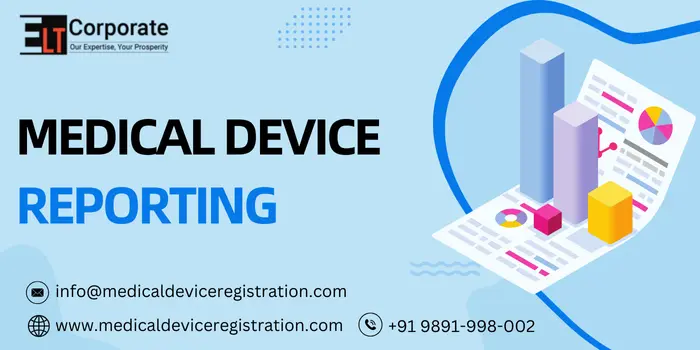Medical Device Reporting (MDR) plays a crucial role in ensuring the safety and effectiveness of medical devices in healthcare settings. Enforced by regulatory agencies such as the FDA, MDR mandates the reporting of adverse events, product issues, and malfunctions associated with medical devices. This regulatory requirement applies to manufacturers, importers, and device user facilities, aiming to monitor and evaluate the performance of these devices comprehensively.
What Is Medical Device Reporting (MDR)?
Medical Device Reporting (MDR) is a regulatory requirement enforced by regulatory agencies like the FDA (Food and Drug Administration) to monitor and evaluate the performance and safety of medical devices. It commands makers, merchants, and device user facilities to report any adverse events, product issues, or malfunctions related to medical devices. This reporting system helps identify possible dangers and take necessary steps to guarantee the security and viability of clinical gadgets.
Who Is Required To Comply With MDR Regulations?
MDR regulations apply to manufacturers, importers, and device user facilities. Manufacturers are liable for reporting adverse events and item problems related to their devices. Importers are expected to report incidents related to devices they have imported. Device user facilities, for example, hospitals and clinics, should report episodes that happen with gadgets utilized within their facilities.
What Types Of Events Should Be Reported Under MDR?
Events that should be reported under MDR include serious injuries, passings, glitches, and adverse events associated with using clinical devices. This incorporates incidents where the device did not proceed as intended or caused harm to the patient or user.
How Should Incidents Be Reported Under MDR?
Incidents should be reported to the appropriate regulatory agency, such as the FDA in the United States. Manufacturers, importers, and device user facilities can submit reports electronically through the FDA’s MedWatch system or by filling out Form FDA 3500A. It’s essential to give information about the incident, including the involved gadget, the issue’s idea, and any patient outcomes.
What Are The Consequences Of Non-Compliance With MDR Regulations?
Non-compliance with MDR regulations can lead to severe consequences for manufacturers, importers, and device user facilities. Failure to report incidents can bring about administrative activities, including fines, recalls, or legal penalties. Also, it can harm the organization’s reputation and erode trust in the security and adequacy of its clinical devices.
How Does MDR Contribute To Patient Safety?
MDR contributes to patient safety by providing a systematic approach to monitoring and evaluating the performance of medical devices. By reporting incidents and adverse events, regulatory agencies can identify potential dangers early, make proper moves, such as safety alerts or recalls, and prevent patient harm. This proactive methodology guarantees that clinical devices are available, protected, and robust.
What Are Some Challenges In Implementing MDR?
Implementing the medical device regulation (MDR) represents several difficulties for medical service organizations. The main problem is the itemized regulations, which can take time to decipher. Meeting the requirements of the MDR also demands significant resources in terms of time, money, and expertise. Gathering adequate clinical information to exhibit a device’s safety and effectiveness is another test, as it requires directing clinical preliminaries and reviews, which can be excessive and tedious. Generally speaking, fruitful execution of MDR requires cautious preparation, designation of assets, and a careful comprehension of the guidelines to guarantee consistency and keep up with the safety and effectiveness of medical devices.
Check these Latest Articles:-
How Does MDR Contribute To Post-Market Surveillance?
The Medical Device Regulation (MDR) adds to post-market surveillance by requiring manufacturers to monitor the safety and performance of their medical devices after they are placed on the market. This includes gathering and investigating information from different sources, like objections, unfavorable occasions, and gadget breakdowns revealed by medical services experts and patients. By systematically monitoring devices in real-world use, MDR helps identify any issues or risks that may arise over time, allowing manufacturers to take appropriate corrective actions to ensure their devices’ continued safety and effectiveness. Still confuse, then directly consult with the experts at medicaldeviceregistration.com.
Conclusion
In conclusion, Medical Device Reporting (MDR) stands as a cornerstone in the landscape of healthcare regulation, prioritizing patient safety and device effectiveness. By fostering a culture of transparency and accountability among stakeholders, MDR enables early identification of potential risks, prompt intervention, and continuous improvement in device quality. As technology advances and the healthcare landscape evolves, MDR remains essential in safeguarding patient well-being and upholding the integrity of medical devices in the market.
How Do I Comply with MDR?
Medical Device Report needs these documents:-
Quality Management System (QMS) – Article 10.
Technical Documentation – Annex II.
General Safety and Performance Requirements (GSPR) – Annex I.
Clinical Evaluation Report (CER) – Annex XIV.
Post-Market Surveillance Plan – Annex III.

